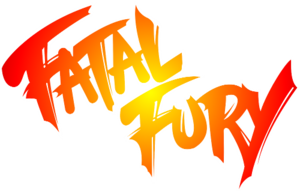| Fatal Fury: King of Fighters (FF1) | |
|---|---|
| Developers |
SNK |
| Systems |
Neo Geo MVS |
| Neo Geo AES WW: 20 December 1991 | |
| Super NES JP: 27 November 1992 NA: April 1993 EU: 1993 | |
| Mega Drive/Genesis NA: February 1993 JP: 23 April 1993 EU: May 1993 | |
| X68000 JP: 23 July 1993 | |
| Neo Geo CD JP: 9 September 1994 NA: October 1996 | |
| Online Play |
Rollback (via Fightcade) |
| Community Channels | |
Introduction
The first SNK fighting game, released in 1991 for the NeoGeo MVS arcade system. One of the pioneers of the fighting game genre as we know it today.
Released in the same year as and several months after Street Fighter II: The World Warrior, Fatal Fury was a popular hit, though not one that took the world by storm the same way Street Fighter II did. However, it was worked on by then former Capcom designer Takashi Nishiyama and was popular enough to release multiple home console ports. Before its release, SNK was also already in the process of creating lore and world building for Fatal Fury, providing more in-depth backstory for the protagonists and the villain compared to Street Fighter, something that wasn't common for arcade games at the time. Its success would then help push SNK's future game development, immortalize Terry Bogard as the company's mascot and an iconic character of the arcade and fighting game space, and serve as a major cornerstone to fighting games as a whole. It was followed by Fatal Fury 2, and over the years lead to several dozen other SNK fighting games and evolving into SNK's King of Fighters franchise.
Today, there isn't as much reason to play the first Fatal Fury past the arcade run or trying to get a high score. Not to mention that compared to a lot of arcade-era fighting games released over the years, Fatal Fury 1 is on the easier end to beat. It is worth remembering for its legacy and impact on fighting games, nonetheless, even if playing with other people is awkward. Since the game was not explicitly designed with competitive play in mind, half the time spent with a second player is done going through the arcade run with both players fighting the CPU - including friendly fire. It switches between arcade mode and player matches after every fight, on top of the three character limitation present in the game. Mechanically speaking, it's also simple, though that should not surprise you considering it's a 1991 fighting game. Fighting games have lately been getting more and more attention brought to them and with that players have also looked back and revisited older titles, even ones that the general public consensus deems terrible. And no, Fatal Fury 1 isn't competitively viable much like SF2 World Warrior isn't. Still, people do play it even today. And it should not be remembered purely for SNK's legacy, but also as a step towards the fighting game genre's evolution. The wiki serves to document Fatal Fury 1 competitive info as best as it can and try to outline what its meta looks like, including hitboxes, frame data and such in one centralized place.






